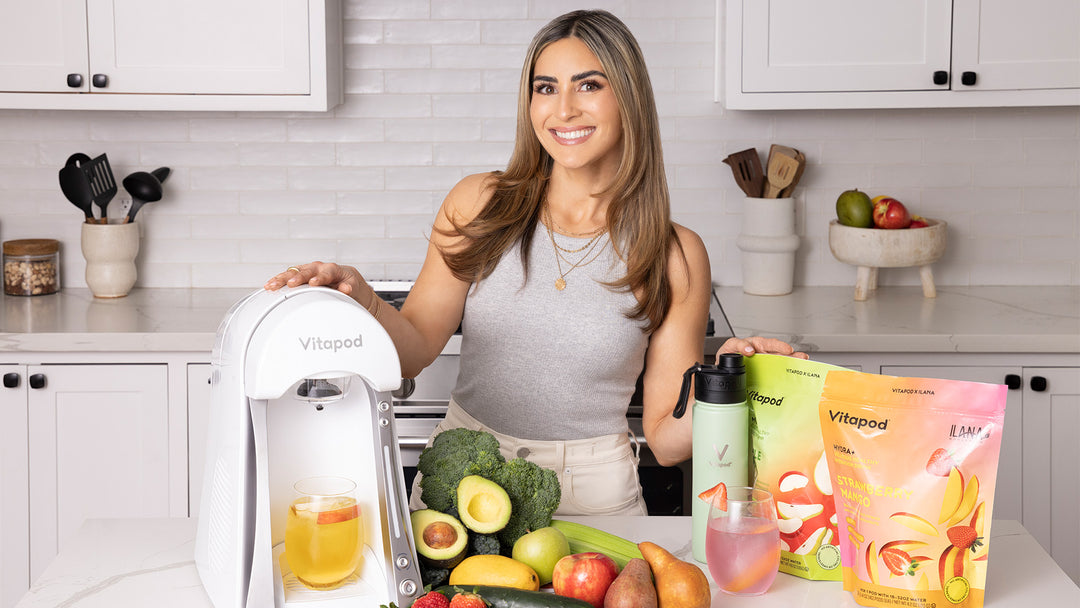Breaking down the new nutrition labels

Nutrition labels can look like a jumbled mess of numbers, nutrition facts, and ingredients.
Yet, once you learn how to read them, you can use nutrition labels to your advantage no matter your food goals.
When the new nutrition label was updated in 2016, the U.S. Food and Drug Administration required companies with over $10 million in sales to use the new label starting January 2020, and companies with less than $10 million in sales were using this new label starting January 2021. Some of those changes included:
- Listing the actual amounts of nutrients instead of just the percent of daily value
- The calories are now larger and in bold font
- Listing added sugars in addition to total sugars
- Getting rid of the calories from fat that used to be at the top of the label
This new label makes it easier for consumers to read the calories, added sugars, serving size, and amount of nutrients instead of weaving through fine print and a lot of extra fluff.
Why should you be looking at nutrition labels?
Nutrition labels list exactly what’s in the box, can or bag. So if you want to know what you’re eating and how much of it you should be eating, then just look at the nutrition label.
If you are looking to lose weight, nutrition labels are a good way to make sure you’re eating correct serving sizes and staying in that caloric deficit. If you need more iron in your diet, then you will want to look at the amount of iron listed on the label and pick items with higher amounts of iron. If you need to cut back on sodium, then you will look for food items with less sodium.
Use the label to your advantage to hit your own food goals.
Start at the top and work your way down
At the top of the nutrition label, you will see two very important items: calories and serving size. Looking at serving sizes can be helpful, especially if you’re trying to follow a caloric-deficit diet. But it’s also good to keep in mind that a lot of calories doesn’t always mean it’s bad for you.
Most times, you will want to avoid foods that are empty calories which means the food has little to no vitamins and minerals listed, and instead has lots of added sugars, sodium, and saturated fat. Think of candy and chips. They are great for road trips and movie theaters, but not ideal for a filling snack on a workday.
If you’re going to be eating, you want to be fueling your body with healthy fats, carbohydrates, protein, vitamins, and minerals.
What does % DV Mean?
On the right side of the nutrition label, you will see, “% Daily Value” which is the percent of what you need on a daily basis based off of a 2,000-calorie-a-day diet. For example, if your nutrition label says there are 37g of carbohydrates, then that would be 14 percent of your daily value for carbohydrates for the day.
When you’re looking at the vitamins and minerals, any value over 20 percent of your DV is considered a high source of that vitamin and/or mineral and any value under 5 percent is a low source.
If you look at the Vitapod Hydra+ pods, they have 300mcg of Vitamin A which is 30 percent of your daily value and 100mcg of folic acid which is 40 percent of your daily value for that vitamin. This would be a great source if you are lacking in either one of those vitamins.
Less is more when it comes to ingredients
Finally, let’s look at the ingredients. The fewer ingredients on a food item typically means that it is less processed and there’s not a whole lot of extra “stuff” in there. If you can’t pronounce half of the ingredients listed, then you may want to choose a different snack like nuts or fruit because it’s important to know what you’re putting into your body.
In the end, it’s all about listening to what your body wants and fulfilling that need. Be conscious of what you’re eating, but not overbearing. Reading nutrition labels can help you find the food that’s right for you and help you implement a healthy daily lifestyle.









